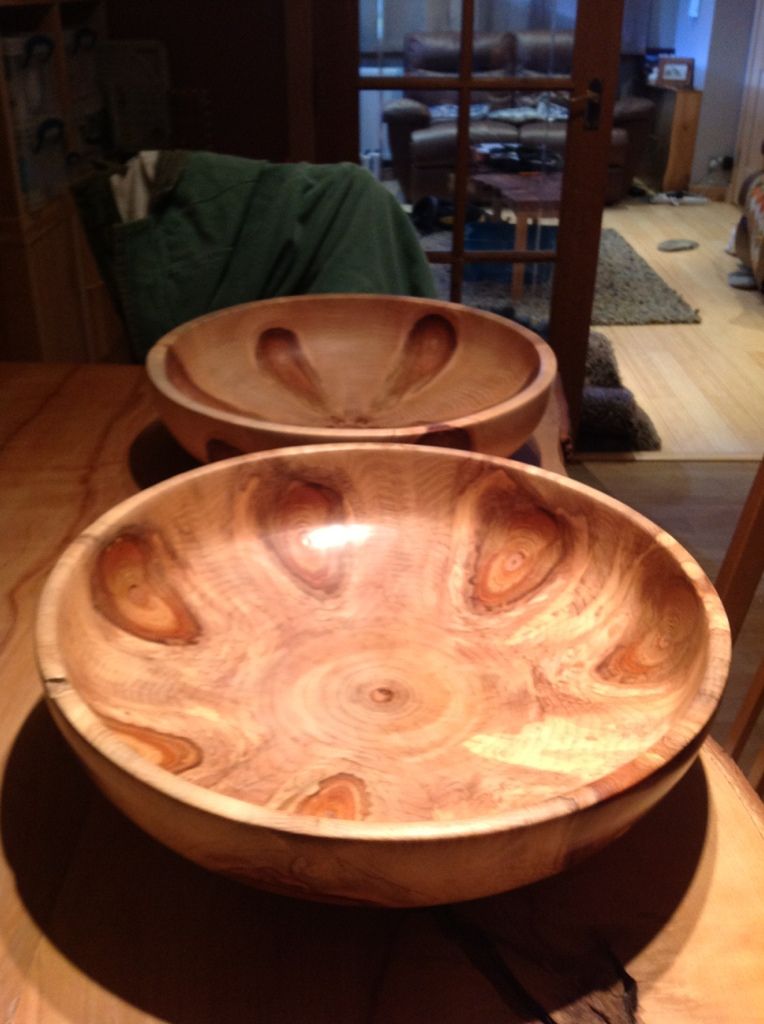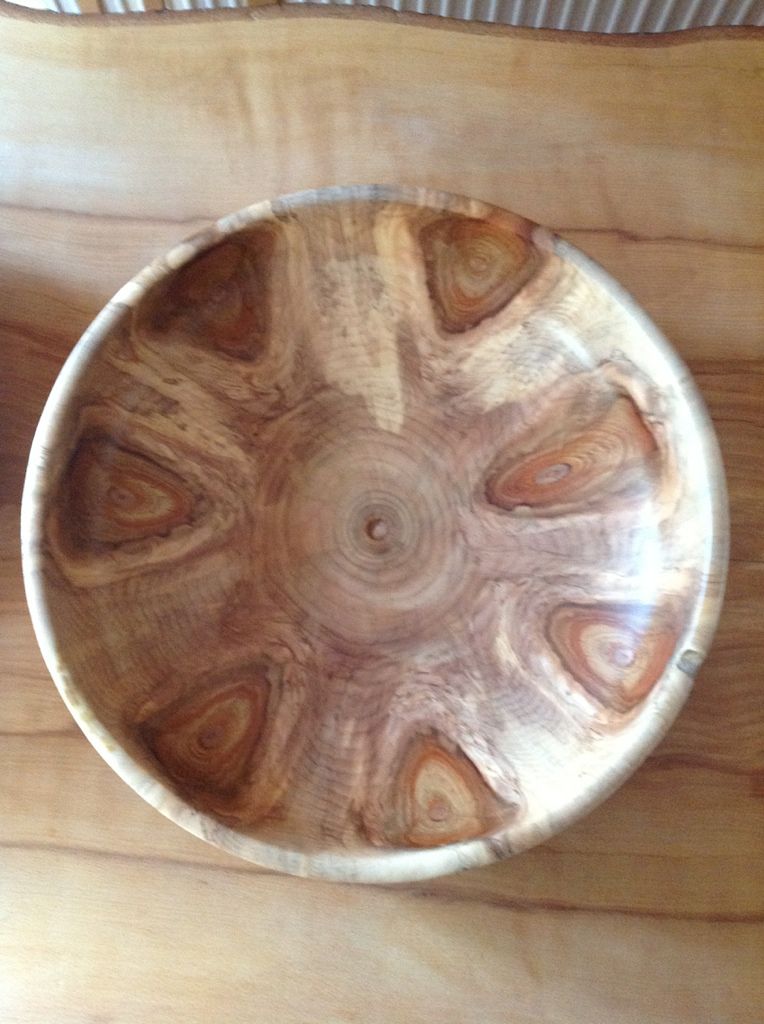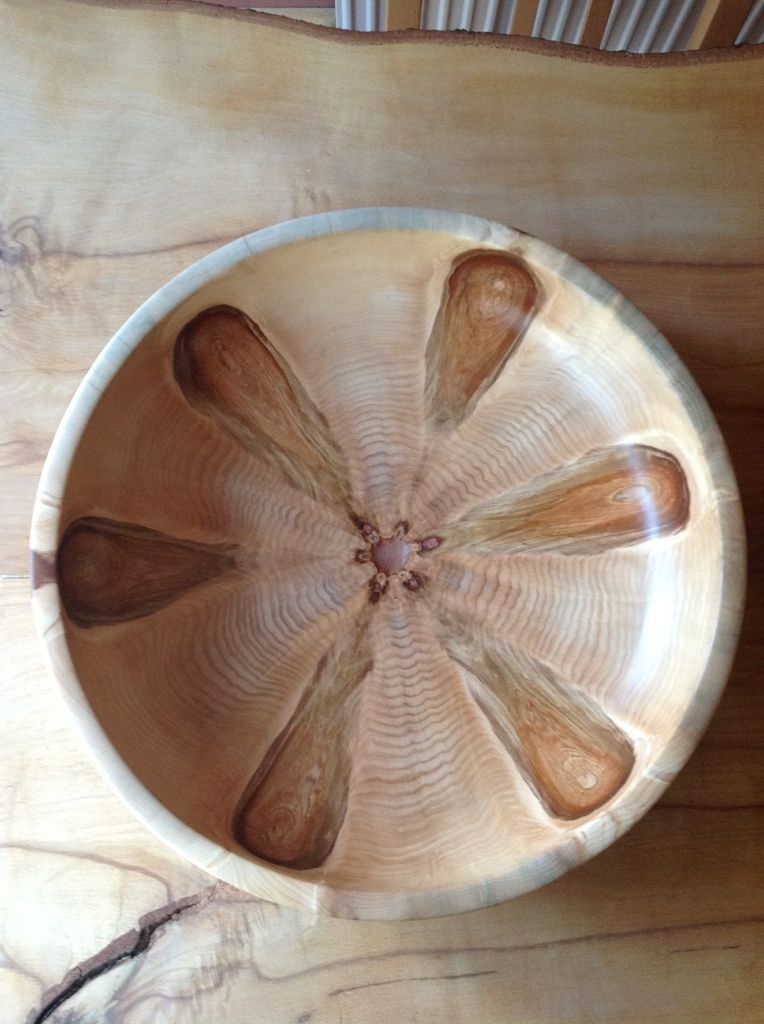I agree with DuncanH - it's definately an "acquired taste" and the smell of the sap/resin isn't too good either. There were some logs for sale at Harrogate and was going to ask if the price label was actually a bribe/offer to take them away but thought better of it.
I like the finished bowls though Ian - the way you managed to get the knots across the bottom of the bowl is very neat and not as easy as it looks to achieve from my experience.
I found that a mallet and chisel were the best tools to get rid of the bark/sapwood which was about 1" thick on my logs and full of oozy resinous sap which sticks to anything and everything it touches and the spines of the bark can be nasty too - wear gloves when handling. I find that a chisel is easier to clean than a chainsaw.
Meths will clean the sap off hands and tools but if you leave the logs for any length of time you can almost cast your own amber with the stuff oozing out everywhere!
I don't really like the look of the trees and they aren't UK natives - so would have no quarms about cuttting them down ;-)
It's ironic that there are actually almost as many trees in gardens here than their native habitat but CITES doesn't really affect what happens to MP trees felled here, unless perhaps if anyone tried to export them from UK. As I understand it the trees here are really only subject to normal TPO's on a case-by-case basis.
CITES is pretty sensible and is all about international trade and preventing exports from the native habitat.
http://www.cites.org/eng/disc/how.php "CITES works by subjecting international trade in specimens of selected species to certain controls. All import, export, re-export and introduction from the sea of species covered by the Convention has to be authorized through a licensing system."
It certainly doesn't cover domestically grown and processed timber from species grown outside the normal habitat.
Jon







































